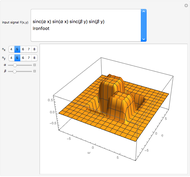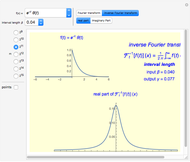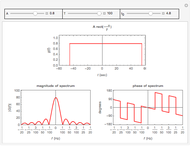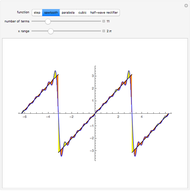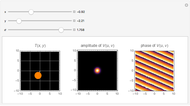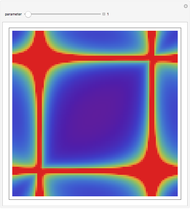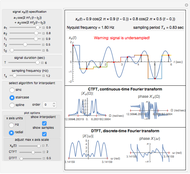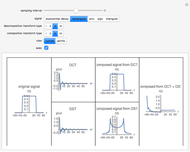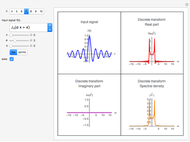XFT: An Improved Fast Fourier Transform

Requires a Wolfram Notebook System
Interact on desktop, mobile and cloud with the free Wolfram Player or other Wolfram Language products.
This Demonstration computes an improved fast Fourier transform that we call XFT to distinguish it from the usual FFT algorithms. The XFT is given by the product  , where
, where  is a diagonal matrix with
is a diagonal matrix with  diagonal element given by
diagonal element given by  ,
,  ,
,  is the standard discrete Fourier transform, and
is the standard discrete Fourier transform, and  . Therefore, the XFT is as fast as the FFT algorithm used to compute the discrete Fourier transform. However, the output of the XFT is more accurate than the output of the FFT because it comes from an algorithm to compute the fast fractional Fourier transform based on a convergent quadrature formula. This Demonstration approximates the special case of the continuous Fourier transform defined as
. Therefore, the XFT is as fast as the FFT algorithm used to compute the discrete Fourier transform. However, the output of the XFT is more accurate than the output of the FFT because it comes from an algorithm to compute the fast fractional Fourier transform based on a convergent quadrature formula. This Demonstration approximates the special case of the continuous Fourier transform defined as 
 evaluated at the points
evaluated at the points  ,
,  .
.
Contributed by: Rafael G. Campos, J. Jesus Rico Melgoza, and Edgar Chavez (March 2011)
Open content licensed under CC BY-NC-SA
Snapshots
Details
A discrete fractional Fourier transform was obtained in closed form in [1] by using finite-dimensional vectors representing Hermite functions and some asymptotic properties of the Hermite polynomials. The quadrature formula for the fractional Fourier transform obtained in [1] can be written in matrix form yielding a discrete representation of the kernel of this transform. Since this discrete fractional Fourier transform (XFT) can be written in terms of the standard discrete Fourier transform through a diagonal congruence transformation (a chirp-FFT-chirp transformation), an efficient algorithm of  complexity for fast computations of the fractional Fourier transform can be given. This Demonstration considers the continuous Fourier transform, defined as
complexity for fast computations of the fractional Fourier transform can be given. This Demonstration considers the continuous Fourier transform, defined as 
 .
.
[1] R. G. Campos, J. Rico–Melgoza, and E. Chavez, "XFT: Extending the Digital Application of the Fourier Transform," arXiv, 2009.
[2] R. G. Campos, J. Rico–Melgoza, and E. Chavez, "RFT: A Fast Discrete Fractional Fourier Transform," submitted.
Permanent Citation






